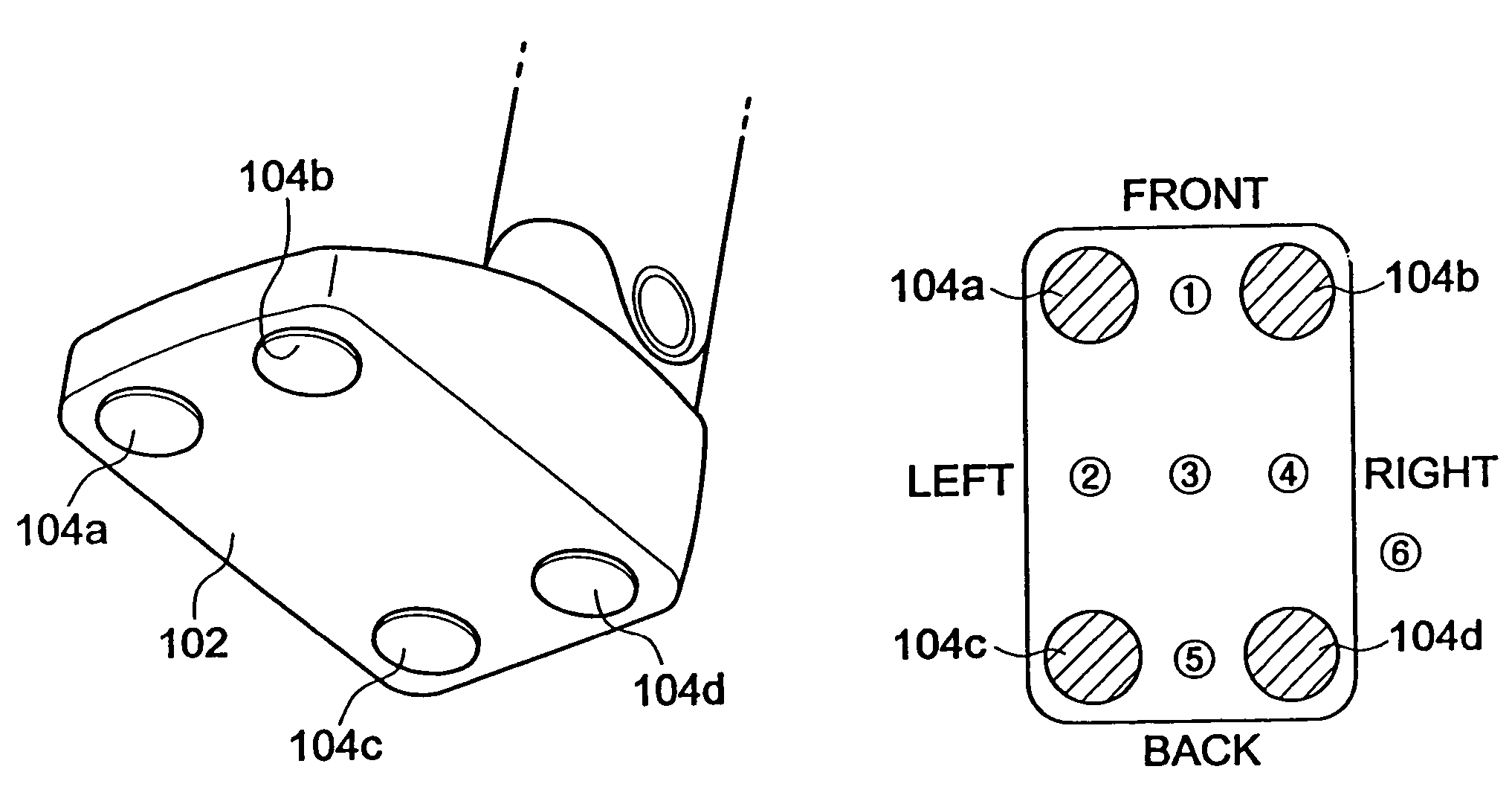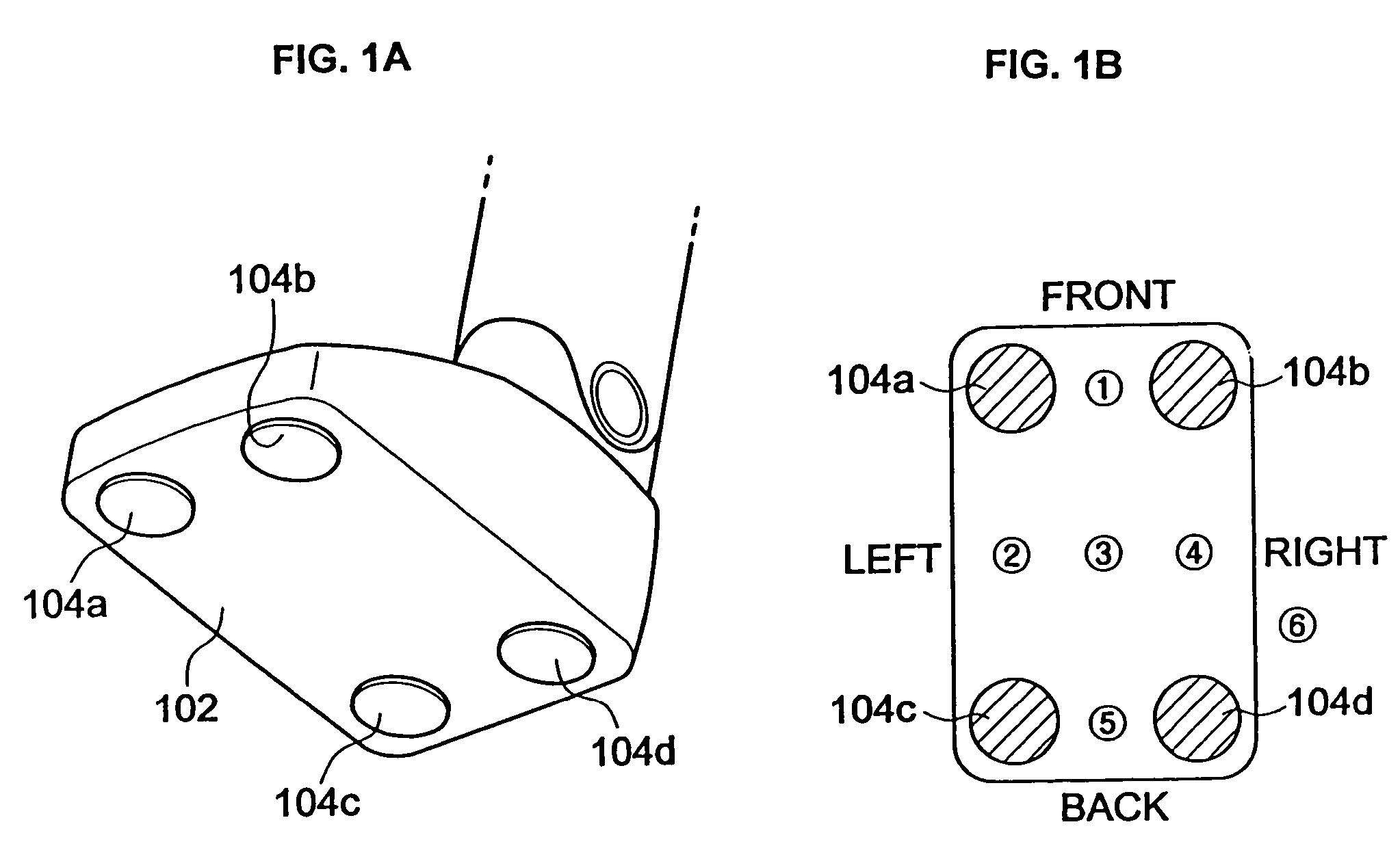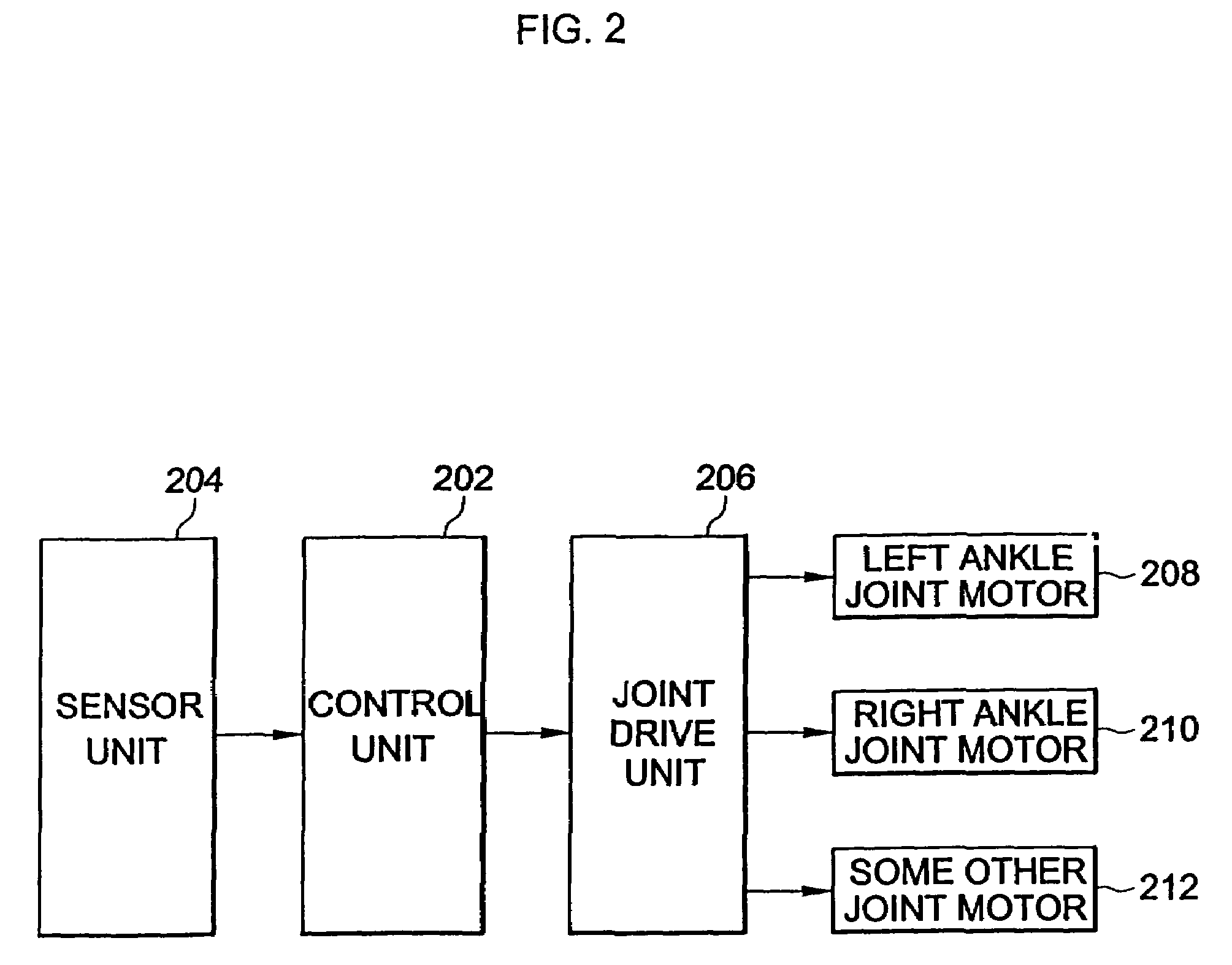Walking robot using simple ground reaction force sensors and a method of controlling the same
a ground reaction force and sensor technology, applied in the field of walking robots, can solve the problems of difficult control of upright posture, unstable upright posture of biped locomotion, and relatively expensive ground reaction sensor, and achieve the effect of reducing the development and manufacturing cost of walking robots and easy participation
- Summary
- Abstract
- Description
- Claims
- Application Information
AI Technical Summary
Benefits of technology
Problems solved by technology
Method used
Image
Examples
Embodiment Construction
[0024]Reference will now be made in detail to the present preferred embodiments of a walking robot and a method of controlling the same, according to the present invention, examples of which are illustrated in a FIG. 1A to FIG. 5B, wherein like reference numerals refer to like elements throughout.
[0025]FIGS. 1A and 1B are views showing an arrangement and operations of sensors 104a to 104d mounted on a sole 102 of a foot of a walking robot. As shown in FIG. 1A, a total of four sensors 104a to 104d, with two sensors 104a and 104b located on a front portion of the sole 102 of the walking robot and two sensors 104c and 104d located on a back portion thereof, are mounted on the sole 102 to detect whether the sole 102 is in contact with a ground while the walking robot of the present invention performs locomotion. The arrangement of the sensors 104a to 104d forms a rectangle. It is possible to detect not only whether the sole 102 is in contact with the ground, but also which part (front / b...
PUM
 Login to View More
Login to View More Abstract
Description
Claims
Application Information
 Login to View More
Login to View More - R&D
- Intellectual Property
- Life Sciences
- Materials
- Tech Scout
- Unparalleled Data Quality
- Higher Quality Content
- 60% Fewer Hallucinations
Browse by: Latest US Patents, China's latest patents, Technical Efficacy Thesaurus, Application Domain, Technology Topic, Popular Technical Reports.
© 2025 PatSnap. All rights reserved.Legal|Privacy policy|Modern Slavery Act Transparency Statement|Sitemap|About US| Contact US: help@patsnap.com



